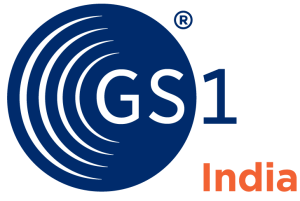It All Began With A Barcode
The journey began in 1996 when the Ministry of Commerce & Industry, along with CII, FICCI, ASSOCHAM, FIEO, IMC, BIS, Spices Board, APEDA, and IIP, set up EAN India to enable Indian exporters adopt global barcoding standards.
Soon after, EAN India forayed into the domestic retail sector by bringing the industry stakeholders together to address their common supply chain challenges. This was known as Efficient Consumer Response (ECR) India movement, which marked the beginning of collaborative commerce. EAN India was later renamed as GS1 India.
Milestones in our journey
- 1998The Canteen Stores Department is one of the early adopters of GS1 barcodes (EAN codes) to manage their inventory and Point-of-Sale billing.
- 2002To increase the market reach for SMEs and help them penetrate in modern trade retail, Ministry of MSME introduced a financial assistance scheme for barcoding.
- 2012Delhi State Excise Department rolled out Excise Supply Chain Information Management System (ESCIMS) based on GS1 standards for detecting counterfeit through liquor traceability from manufacturing to the Point of Sale.
- 2016GS1 India conceptualised and developed ROHINI for IIB, as a registry for identification of eachhospital/day-care center, to ensure fasterprocessing of insurance claims.
- 2021DataKart Centre of Exellence setup in collaboration with Midas Labs at IIIT Delhi, to develop AI and ML-based tools for improvingproduct data quality.
- 1996In India, GS1 India was established in the year 1996 as a not-for-profit organization by the Ministry of Commerce and Industry, Government of India along with leading Chambers of Commerce and Industry. As an affiliate of GS1 Global, GS1 India administers and allocates GS1 barcodes in India.
- 1999GS1 India was instrumental in setting up ECR India, which started an era of collaborative commerce aimed at working together to serve consumers better, faster, and at reduced costs.
- 2006With the emergence of modern trade retailing, Reliance Retail, Big Bazaar, More, and Spencers Retail endorsed source marking of GS1 barcodes on products for POS scanning.
- 2013IHMCL (Indian Highways Management Company Limited) adopted GS1 asset identifiers (GIAI) inEPC/RFID tags for electronic toll collection.
- 2019GS1 India set up the National Industry Forum for Retail, a platform for collaboration, networkingand sharing best practices betweentrading partners.
- 1971
Industry leaders in the US select a single standard for product identification. Still used today, it's known as the GS1 barcode.
- 1973
Industry leaders agree to use a "universal product code" for product identification. This identifier is called the Global Trade Item Number, or GTIN, today.
1974The European Article Numbering (EAN) Association — later called GS1 — opens an office in Brussels. Its founding members launch an identification system to improve supply chain efficiency.
1976On 26 June, a packet of chewing gum becomes the first barcoded product to be scanned in a supermarket.
- 1977
With wide area networks making an impact on supply chains, we create our first international standard for electronic data interchange.
1983
As barcodes have proved their reliability and usefulness in real-world environments, they are extended and used on product outer cases.
- 1989
With wide area networks making an impact on supply chains, we create our first international standard for electronic data interchange.
- 1990
The US and international arms of GS1 come together formally, creating a single organisation with a presence in 45 countries.
- 1995
We expand our work into the healthcare sector, working closely with healthcare bodies and providers.
2000In just ten years, we double the number of countries in which we have a local presence.
2002To increase the market reach for SMEs and help them penetrate in modern trade retail, Ministry of MSME introduced a financial assistance scheme for barcoding.
Testimonials
GS1 India is synonymous with customer satisfaction, trust and value. Watch the video bytes to know more.









